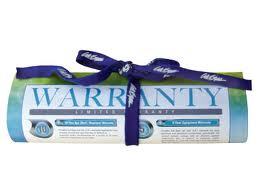
Home Living+
Tips and suggestions for happy home living, from furniture and bedding to cleaning and more.
BBQ & OUTDOOR | 6 JUNE, 2024
4 MIN READ
How to get a warranty honoured
You're entitled to get what you paid for (and you didn't order a faulty appliance)

When an appliance goes on the blink, we're often left wondering whether it's worthwhile to repair or better off simply replacing it.
Before making a decision, check if the appliance is under warranty. You may be able to get a repair or replacement care of the manufacturer. If so, there are a few things that will help you expedite what can otherwise be a painfully slow process. Firstly, think about how and why the appliance is not working.
1. Prevention is better than...
While it’s easy to lose your cool over a vacuum that sucks because it doesn't suck or washer that cries all over the laundry floor every time it does a load, remember, nothing is infallible and stuff breaks. Manufacturers put their appliances through rigorous testing because they actually want them to work for you and they like happy customers!
Fisher & Paykel, for example, puts its test washing machines through 20 years' worth of washes to make sure they are ready for market. The best you can do to avoid breakages is to treat your appliances with care. Look after them, they'll look after you. And that includes...

2. Using the appliance for its intended purpose
This is part of reading the fine print. Many products won’t be covered under warranty if they have been used for other than what they are supposed to. So, don’t complain if your dishwasher packs up because you were trying to wash your clothes or steam a fish in it (we know it happens).

3. Keep track of your receipts
An obvious one, but even well-meaning receipt keepers can lose track of where the tiny, biodegradable bits of paper go. All too easily, they are forgotten and end up shredded through the wash cycle in a pair of pants. Using credit card statements as a backup is a good idea too.
Try to keep all your important receipts in the same place. Keep the purchase receipts and receipts for any maintenance work you have done on the appliance since it was purchased and under warranty together.
If you've bought your fridge, washer or dryer from Appliances Online, you'll get your order confirmation, invoices, receipts and order details sent to you, which makes them far easier to keep track of (we recommend keeping a safe email folder of all your digital receipts so you don't trashcan it).
Online customer portals often keep your purchase history easily accessible as well, allowing you to retrieve receipts if you need them for warranty claims or any other reason.

4. Be reasonable, but know your rights
All the above being said, if you’ve done the right thing all along the way, don’t get fobbed off or discouraged if the process becomes difficult. Know your rights, and let others know that you know them.
In Australia, we have a Consumer Law which entitles us to the right to ask for a repair, replacement, or refund if goods or services we have bought have problems. If what we have bought is faulty, unsafe, looks unacceptable, or does not do what it’s supposed to, we can ask for a repair, replacement, or refund.
Also, in Australia, an expired warranty doesn’t expel you from entitlement to a repair or replacement. According to the Australian Competition and Consumer Commission (ACCC):
'There are no specific rules about exactly how long a product or service should last. Even after a voluntary or manufacturer’s warranty expires, you may still be entitled to a repair, replacement, or refund. This will depend on what you purchased and the nature of the problem.'
Deciding whether to bother claiming on warranty can be tricky. If you've taken care of the appliance, though, and you believe that it's not functioning in the way that it should, it can definitely be worthwhile pursuing.

A self-confessed lazy-bones, Keri seeks out quirky technology that eases the human workload. Her favourite household appliances are robotic vacuum cleaners and fridges that tell your smartphone when it's time to pick up more beer on the way home. Magic.
Latest Articles
KITCHEN
2 DECEMBER 2025
Our Top 10 best selling French door fridges in Australia 2025
We look at capacity, energy efficiency, features and prices
KITCHEN
1 DECEMBER 2025
How long does food keep for in the freezer?
Smart freezing tips to reduce food waste
HOME LIVING+
28 NOVEMBER 2025
Yes - we have free delivery for appliances in Melbourne and VIC!
Why pay for delivery when you can get it for free?
KITCHEN
26 NOVEMBER 2025
Our Top 10 best selling freezers in Australia 2025
Make summer a breeze with some extra freeze
More Like This
KITCHEN
2 DECEMBER 2025
Our Top 10 best selling French door fridges in Australia 2025
We look at capacity, energy efficiency, features and prices
KITCHEN
1 DECEMBER 2025
How long does food keep for in the freezer?
Smart freezing tips to reduce food waste
HOME LIVING+
28 NOVEMBER 2025
Yes - we have free delivery for appliances in Melbourne and VIC!
Why pay for delivery when you can get it for free?



